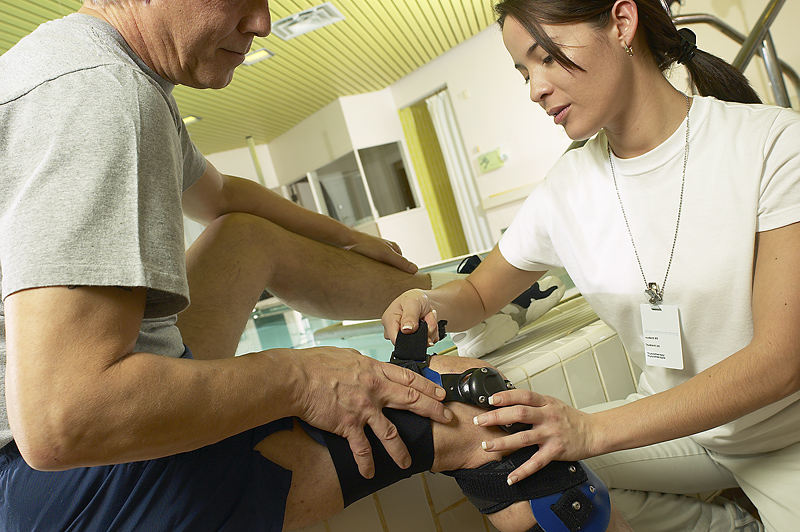
MONDAY, March 14 (HealthDay News) — Doctors today are more likely to advise obese arthritis patients to lose weight than 10 years ago, but they still fall short on counseling patients to exercise or learn about pain-management techniques, a new study finds.
Researchers at the U.S. Centers for Disease Control and Prevention looked at how well the health care system met arthritis-management goals set by the federal government in 2000 as part of a program called Healthy People 2010.
Noting that only one of the three key objectives was achieved — recommending weight loss — the study authors said physicians are missing important opportunities to help arthritis patients manage their pain and disability.
“Doctors are pressed for time and may be focused on medications rather than behaviors,” said lead author Dr. Charles Helmick, a medical epidemiologist at the Arthritis Program of the CDC’s National Center for Chronic Disease Prevention and Health Promotion. “They may not know how to connect people with the right sort of education or exercise programs.”
About 46 million U.S. adults suffer from arthritis, making it one of the most common chronic conditions in the United States, according to background information in the study.
Osteoarthritis, the most common form of the disease, results from wear and tear as people age. Rheumatoid arthritis, an autoimmune disease, can occur at any age, and is believed to have a genetic basis. Symptoms for both include inflammation and stiffness of the joints, and pain.
Weight loss, arthritis education and exercise are known to improve pain and quality of life for arthritis patients, according to the study, published in the March/April issue of Annals of Family Medicine.
The U.S. government goals were developed with input from many professional organizations, said Hemlick. “Our purpose was to try to achieve higher levels of these objectives,” he added.
Using data compiled from two national surveys involving more than 100,000 U.S. adults with doctor-diagnosed arthritis, the study found no change in the percentage of patients who took an arthritis self-management class (11 percent) or were told to engage in physical activity (52 percent) between 2002 and 2006. (The targets for 2010 were 13 percent and 67 percent, respectively.)
But the number of obese arthritis patients whose doctors advised weight loss for pain relief increased significantly — from 35 percent in 2002 to 41 percent in 2006, putting the 2010 target of 46 percent within reach.
Doctors were less likely to advise patients who were merely overweight, rather than obese, to shed pounds, the study found.
About 66 percent of arthritis patients are overweight or obese, which increases stress on the joints, contributing to chronic pain. Losing just 13 pounds can significantly reduce disability from knee osteoarthritis, according to the study.
Also, arthritis education programs can “improve the health of an adult … by 15 to 30 percent more than medication alone,” the study said, and physical activity helps “reduce pain and disability and to increase function.”
The Arthritis Foundation offers educational programs for people with the disease in community settings such as the YMCA.
“There is good evidence that being physically active reduces pain in the long run, so it’s just a matter of getting over the initial hump,” said Hemlick, referring to patients’ concerns about pain from exercising.
Recommended activities include low-impact exercise, such as walking, swimming, tai chi or aquatic exercise.
One expert cautioned that the study findings are subject to bias because the subjects were interviewed by telephone, and their recall might be faulty.
“Surveys by phone are great for gathering a lot of data so it eliminates the statistical problems when you have too few patients,” said Dr. James Barber, an orthopedic surgeon at Coffee Regional Medical Center in Douglas, Ga. “But it’s not as scientific as if patients were studied in a more prospective manner.”
However, he said the findings do reflect communication gaps in current practice.
Doctors hesitate to tell patients something obvious, such as the need to lose weight, and like patients, they feel uncomfortable discussing the subject, said Barber.
“It’s safe to say that the things this study measured — education, weight loss, exercise — we know they help patients. But how do we get doctors to talk freely and easily with patients?” he asked.
More information
The U.S. National Library of Medicine offers basic facts about arthritis.

